DINOSAURS: Up in the Air
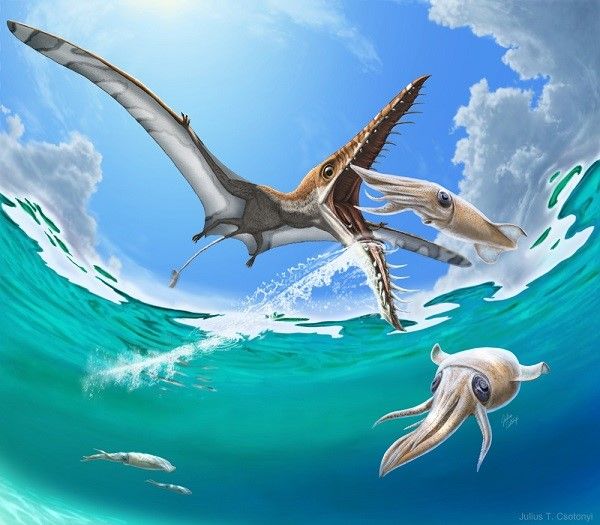
IMAGE SOURCE
High, far above the terrestrial dinosaurs, the pterosaurs, which means "winged reptiles", flew. Although relatives of the dinosaurs, in itself the pterosaurs were not dinosaurs. They all had thin, hollow bones and wings made of skin that stretched between the fingers of long bones and legs. They appeared at the same time as the dinosaurs and lived with them until they also became extinct at the end of the Cretaceous Period. They were the supreme sovereigns of the prehistoric skies of the Earth when fluttering over land and sea.
PTERODACTYLUS
The Pterodactylus was an agile flier that probably fed on insects. Unlike other pterosaurs with long tails, that of pterodactylus was a thick, fat spot. Yet 30 cm (12 in) long, it had a light skeleton and thin, hollow bones. Perhaps these lightweight features were to give you greater flight control, helping you fly fast and giving you the ability to dive and turn easily.
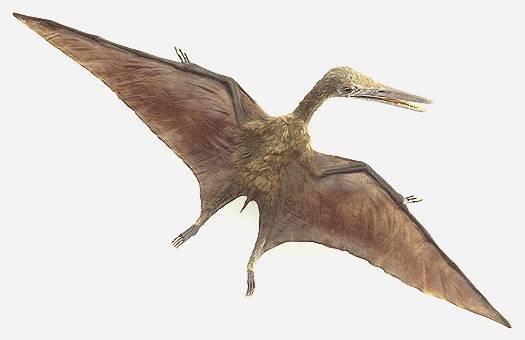
IMAGE SOURCE
PTERODACTYLUS PROFILE
The terodactylus belong to the pterodactyloid branch of the pterosaurian family tree. These pterosaurs have short tails.
Lived: 140 million years ago (cretacic)
habitat: rivers, seas, lakes
Size of wings: up to 1.8 m (6 ft)
Long: up to 30 cm (12 feet)
Diet: fish, insects
CHARACTERISTICS OF PTERODACTYLUS FOSSILIZED
This fossil embedded in limestone shows the delicate skull of the pterodactylus and its fine bones. His four fingers are clearly visible, three fingers in each hand were short, like hooks, and he used them to defend himself. The fourth finger is seen here diagonally from the right hand to the right leg. The wings of the Pterodactylus were attached to each of the long toes and legs.
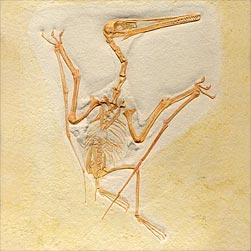
IMAGE SOURCE
RHANPHORHYNCHUS
With its long tail moving back when flying, the Rhamphorhynchus was a large pterosaur. He ate fish and probably caught his prey by flying low, in a dive, over the water and holding it with his beak. His long front teeth pointed forward in his beak, in an accommodation called "trappez". They were designed to lance and hold the fish. After catching a fish, the Rhamphorhynchus could return to the land, where it was eaten, first the head. as many seabirds do with their prey today.
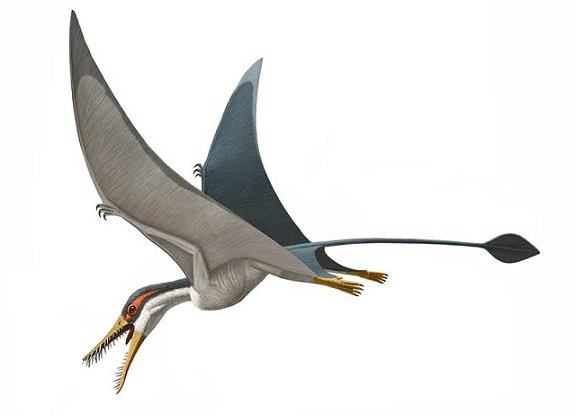
IMAGE SOURCE
PROFILE OF THE RHAMPHORHYNCHUS
The Rhamphorhynchus belongs to the ranforrinco branch of the pterosaur family tree. These pterosaurs had long tails.
Lived: 150 million years old (Jurassic)
habitat: rivers, seas, lakes
Size of wings: up to 2 m (6 1/2 ft)
Long: up to 1 m (3 1/3 feet)
Diet: fish, insects
CHARACTERISTICS OF RHAMPHORHYNCHUS FOSSILIZED
Found in Germany, this fossilized Ramphorhynchus was preserved in limestone. The preservation is so good that the profile of the wing membrane can be seen, like the tooth-shaped skin membrane, along its tail. The fossil reveals the presence of a pelican-like bag, which he used to make water before swallowing his entire prey.
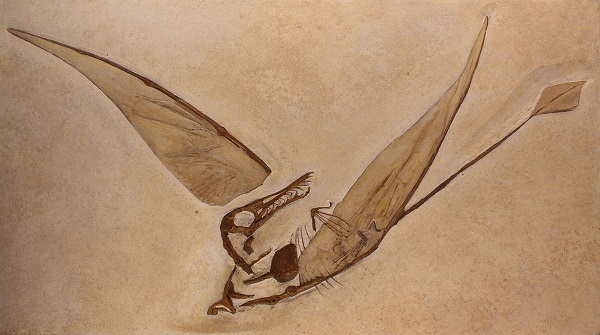
IMAGE SOURCE
An interesting article that lets us know a little about these ancient creatures that lived in prehistory, thanks for all their support.


Transfer 0.001 SBD or 0.001 STEEM to @a-0-0 to have your last blog post resteemd to over 33,700 followers. Leave Memo empty.